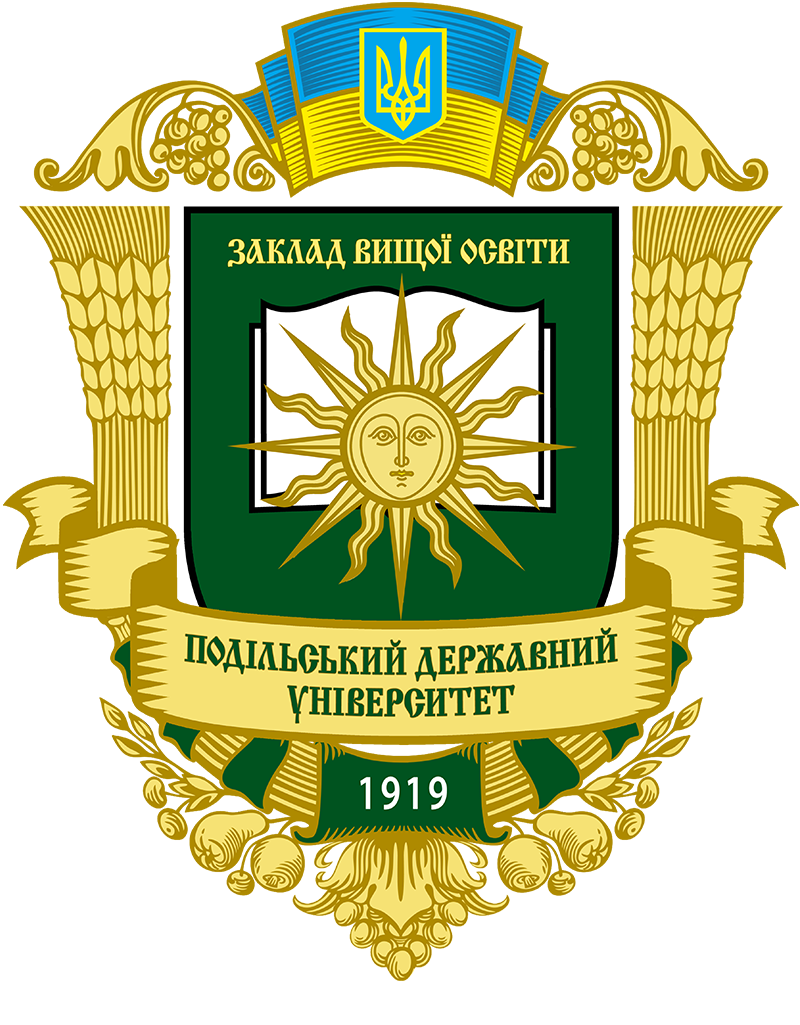МОДЕЛЮВАННЯ ТЕХНОЛОГІЇ ПАСАЖИРСЬКИХ МАРШРУТНИХ ПЕРЕВЕЗЕНЬ
DOI:
https://doi.org/10.37406/2706-9052-2023-3.14Ключові слова:
маршрут, система, транспорт, окупність, прибуток, квартал, моделюванняАнотація
У роботі продовжено обстеження побудованої моделі маршрутної мережі пасажирського транспорту. Запропонована у попередніх дослідженнях модель, на відміну від наявних моделей маршрутів пасажирського транспорту, враховує сукупне функціонування маршруту в середовищі маршрутів конкурентів і можливого існування в одному регіоні двох і більше мереж. Параметри функціонування маршруту є важливими при керуванні маршрутом та всією транспортною системою маршрутів пасажирського транспорту. Врахування в моделі системності такого функціонування надає можливість приймати управлінські рішення при врахуванні внутрішніх та зовнішніх факторів випливу на систему та її окремі елементи, у ролі яких можна приймати окремі маршрути. У роботі розкрито частину моделювання роботи автомобільного транспорту. Параметрами для прийняття рішень про керування перевезень прийнято чистий прибуток на маршруті від його функціонування в часі, період окупності проєкту із закупівлі засобів транспорту на даний маршрут, чистий дисконтований дохід та витрати на утримання персоналу з обслуговування даного маршруту. Опираючись на попередні дослідження, ми вважали, що обрані параметри є актуальними для рішення технічних, економічних та соціальних задач при керуванні регіональним транспортом. Проведене моделювання надало змогу встановити моделі окупності проєктів, фінансових потоків тощо. Отримані графічні моделі доводять, що при виявленні певного регіону пасажирських перевезень його можна змоделювати та отримати моделі розвитку певних подій. Графічні моделі, імовірно, мають певні закони розподілу розрахованих параметрів. Вивчення можливостей визначення прямих або непрямих впливів факторів функціонування маршруту на його параметри є перспективним напрямом подальшого дослідження. Взаємопов’язаність технічних та економічних параметрів при функціонуванні маршруту транспорту в системі є прямою або безпосередньою та потребує вивчення й моделювання для прийняття вірних управлінських рішень для отримання соціальних або соціально-економічних результатів.
Посилання
COVID-19: Transforming air passengers’ behaviour and reshaping their expectations towards the airline industry / A. Afaq, L. Gaur, G. Singh, A. Dhir. Tourism Recreation Research. 2021. № 6. С. 22–39 doi:10.1080/02508281.2021.200821.
Comparative study on hybrid linear and nonlinear modeling framework for air passenger traffic forecasting / Y. Bao, D. Yi, T. Xiong, Z. Hu. Advances in Information Sciences and Service Sciences. 2011. № 3 (5). С. 43–254. doi:10.4156/aiss.vol3.issue5.28.
The boeing 737 maxreturn to service and competition: How passengers’ preferences would change due to the latent fear of flying / A. Bravo, D.R. Vieira, G. Ferrer. Journal of Modern Project Management. 2020. № 8 (3). С. 113–123. doi:10.19255/JMPM02510.
Cai J., Zhang N. The dynamic correlation between civil aviation passenger traffic volume and its influential factors based on DCC-GARCH model. 2020. № 2. С. 35–46. Doi:10.1007/978-981-13-9406-5_76.
Dang Y., Li W. Air passenger flow structure analysis with network view. Jiaotong Yunshu Xitong Gongcheng Yu Xinxi. Journal of Transportation Systems Engineering and Information Technology. 2010. № 10 (5). С. 167–174.
Dang Y., Song S. Invulnerability analysis of chinese air passenger flow network based on centrality. Complex Systems and Complexity Science. 2013. № 10 (1). С. 75–82.
Fassiaux S. The difficult balance between the crisis of the aviation sector and air passenger rights in the era of covid-19. Le difficile equilibre entre la crise du secteur de l’aviation et les droits des passagers aeriens a l’ere du covid-19; El difícil equilibrio entre la crisis del sector aéreo y los derechos de los pasajeros en la era de la covid-19. Revista De Derecho Comunitario Europeo. 2021. № 68. С. 185–225. Doi:10.18042/cepc/rdce.68.06.
Huang F., Peng J., You M. Analyses of characetristics of air passenger group mobility behaviors. Wuli Xuebao. Acta Physica Sinica. 2016. № 65 (22). С. 65–75. Doi:10.7498/aps.65.228901.
Ida Y. Changes of air passenger distribution patterns in japan. Japanese. Journal of Human Geography. 1993. № 45 (3). С. 221–243. Doi:10.4200/jjhg1948.45.221.
Jing He.J., Xu L., Ning Guo X. Air passengers’ purchasing behavior of specialty products at airport: An empirical study. Paper presented at the ACM International Conference Proceeding Series. 2021. № 6. С. 13–17. Doi:10.1145/3503491.3503494.
Urban functions of guangzhou and shenzhen focusing on the city network relationship: A comparative analysis on the original places of air passenger flow / G. Leixian, W. Xiaoli, G. Xiaofang, Z. Xuejun, K. Changcheng. Tropical Geography. 2021. № 41 (2). С. 229–242. Doi:10.13284/j.cnki.rddl.003323.
An analysis and decomposition ensemble prediction model for air passenger demand based on singular spectrum analysis. Xitong Gongcheng Lilun Yu Shijian / X. Liang, Z. Guo, Q. Zhang, M. Yang, S. Wang. System Engineering Theory and Practice. 2020. № (7). С. 1844–1855. Doi:10.12011/1000-6788-2019-1010-12.
An integrated forecasting model for air passenger traffic in china based on singular spectrum analysis. Xitong Gongcheng Lilun Yu Shijian / X. Liang, H. Qiao, S. Wang, X. Zhang. System Engineering Theory and Practice. 2017. № 37 (6). С. 1479–1488. Doi:10.12011/1000-6788(2017)06-1479-10.
Reyna O.S.S., De La Mota I.F. Complex networks of the air passenger traffic in Culiacan’s airport. Paper presented at the 30th European Modeling and Simulation Symposium. 2018. № 18. С. 123–128.
Rodríguez-Doncel V., Santos C., Casanovas P.A model of air transport passenger incidents and rights. 2014. № 6. С. 22–41. Doi:10.3233/978-1-61499-468-8-55.
Saifei N., Renxu G. The spatial and temporal dimensions of the interdependence between the air passenger industry and regional economy in the yangtze river delta. Tropical Geography. 2021. № 41 (2). С. 340–350. Doi:10.13284/j.cnki.rddl.003324.
Sharma H. K., Kumari K., Kar S. Short-term forecasting of air passengers based on the hybrid rough set and the double exponential smoothing model. Intelligent Automation and Soft Computing. 2019. № 25 (1). С. 1–14. Doi:10.31209/2018.100000036.
Valutytė R. Striking a healthier balance between air passenger rights and air carriers’ vital interests in the light of COVID-19. Entrepreneurship and Sustainability Issues. 2020. № 8 (2). С. 546–558. Doi:10.9770/jesi.2020.8.2(33).
Time-varying forecast averaging for air passengers in china. Xitong Gongcheng Lilun Yu Shijian/System / J. Zhang, Y. Sun, X. Zhang, S. Wang. Engineering Theory and Practice. 2020. № 40 (6). С. 1509–1519. Doi:10.12011/1000-6788-2020-0443-11.
Zuo P., Li H., Liu W. Development of 8 kW charging generator for railway air-conditioned passenger car. Zhongguo Tiedao Kexue/China Railway Science. 2010. № 31 (2). С. 137–140.










